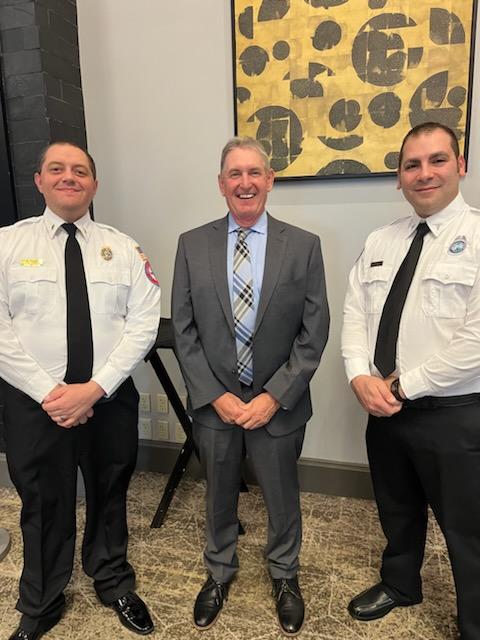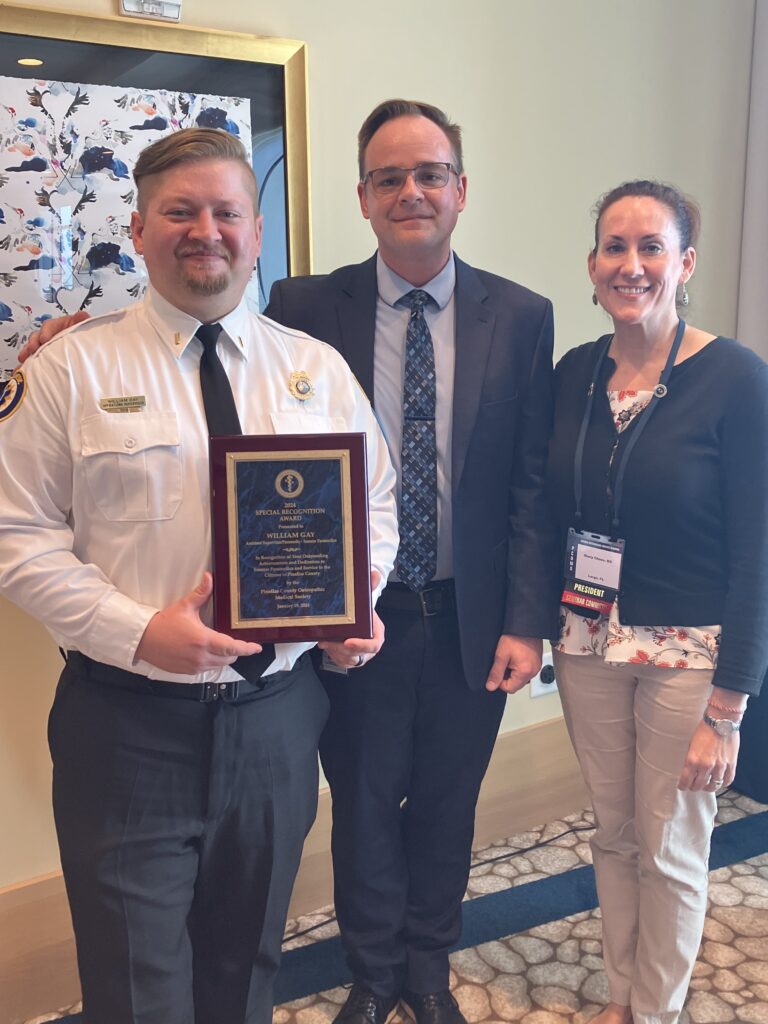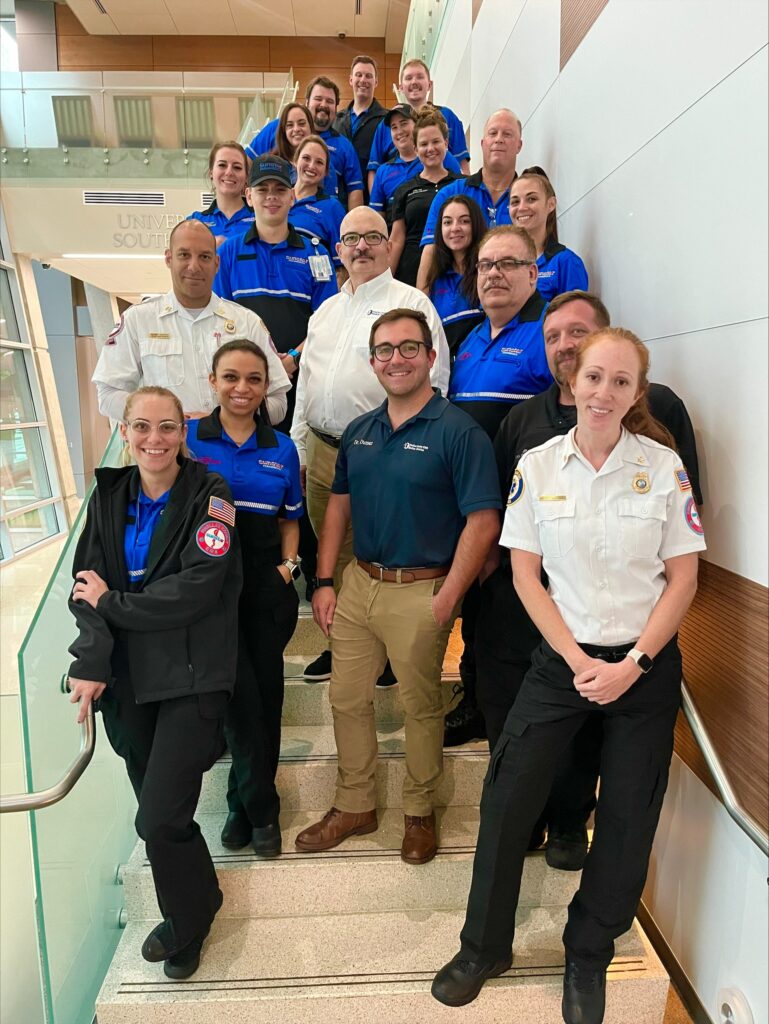Can you image getting from Point A to Point B – sometimes miles away – in Pinellas County within 10 minutes? It’s a challenge that Sunstar Paramedics’ crews face every day. Minutes matter and seconds count – especially to a patient who is not breathing or who is experiencing a heart attack.
Dispatchers are critical to patients quickly receiving care. Sunstar Paramedics dispatchers use an international protocol called Emergency Medical Dispatch questionnaire, which is standard for all emergencies calls in the United States. They then use a computerized mapping system of available resources to determine which ambulance is closest. This system distinguishes the status of each ambulance – showing which are available, responding to a call, at a scene, or transporting a patient to the hospital.
Sophisticated computer programs assist primary dispatchers in quickly identifying the closest and most appropriate ambulance to respond directly to the scene of an emergency. Secondary dispatchers communicate with the ambulance to relay pertinent information about the scene and incident and give routing instruction, while checking real-time traffic patterns and entering patient details into the system.
Each ambulance is equipped with a GPS system, but dispatchers can act as an “eye in the sky” – a personalized GPS to avoid traffic congestion or help locate an address inside a mobile home park – if the paramedics or EMTs need additional help.
The dispatchers’ difficult jobs became a little easier with recent move to a new workspace.
 Sunstar Paramedic’s dispatchers and communications team have joined dispatchers from Pinellas County and the Pinellas County Sheriff’s Office at the new Pinellas Regional 9-1-1 Center in the Public Safety Complex at the Sheriff’s Administration Building.
Sunstar Paramedic’s dispatchers and communications team have joined dispatchers from Pinellas County and the Pinellas County Sheriff’s Office at the new Pinellas Regional 9-1-1 Center in the Public Safety Complex at the Sheriff’s Administration Building.
“The new communications center has the newest state-of-the-art equipment, including updated phone systems, new computers and live TV feeds,” said Brian Eells, Sunstar’s director of communications. “It’s designed to help dispatch be as efficient as possible. These systems help us receive and assess calls faster, and get the ambulance en route to the emergency.”
Inside the Regional 9-1-1 Center, TVs displaying live traffic feeds, news broadcasts, weather reports, and models of the predicted emergency locations line the walls.
Each workstation for Sunstar Paramedics dispatchers holds five computer screens. The information displayed on each computer screen varies depending on the job function, but it can include incoming calls, caller information, ambulance location and status, maps, and the performance utilization late-call system evaluation (PULSE) program.
Paramedics Plus, the ambulance-service provider that operates Sunstar, created PULSE to help determine where to position ambulances in order for quick emergency response times. Ambulances are strategically positioned in areas that have a high probability of needing emergency response. For example, ambulances are routinely positioned near major intersections along 4th Street, Park Boulevard and U.S. Route 19 during rush hour because historical data shows that these areas have a high probability for car accidents.
Sunstar supervisors, managers and directors from various departments, including fleet management, scheduling, and communications, meet each day to analyze late calls and determine the cause. They analyze factors that can cause crews to take longer than anticipated to arrive, such as traffic delays, wrong routes, or a wrong address, and strategize ways to avoid similar problems in the future.
Each console at the new center can be adjusted to the dispatcher’s preference; it has ergonomic features that allow the dispatcher to stand instead of sit, and personal air vents can heat or warm him. Even the brightness of the desk lights can be adjusted to personal preference. These comforts are necessary to help dispatchers fully focus on the task at hand.
Dispatchers must have excellent multitasking skills and incredible focus to quickly process more than 190,000 incoming calls per year, assess the emergency level, assign an ambulance and track the response progress. They’re not just answering 9-1-1 calls; Sunstar dispatchers also answer administrative calls and requests for transport assistance from nursing homes and hospitals, along with other types of calls.
All of Sunstar’s dispatchers are EMTs or paramedics who can assess the situation and, through utilization of a computer program, determine the priority of a 9-1-1 call. The program uses a series of questions to help decide the best course of action, whether it’s deploying an ambulance or recommending non-emergency response treatment.
The job can be stressful, but incredibly rewarding. Most of the dispatchers have been with Sunstar for more than 10 years, and all dispatchers on the Sunstar team are certified in emergency medical dispatch and as a public safety telecommunicator.
“I am proud of the hard work and commitment of our dispatchers,” said Eells. “And with the new equipment in the regional center, I know we can continue to provide excellent patient care to Pinellas County.”
This dedication has paid off. Sunstar Paramedics is an Accredited Center of Excellence through the National/International Academies of Emergency Dispatch, an organization dedicated to quality in emergency telecommunications.



